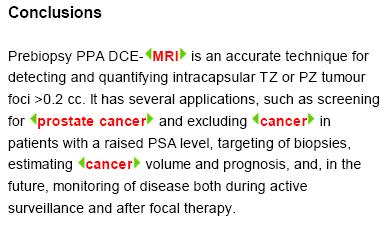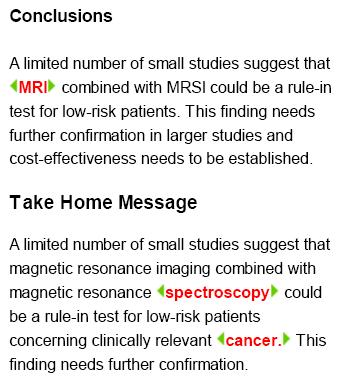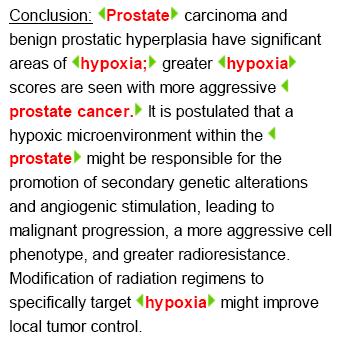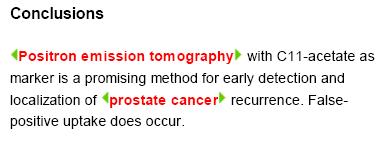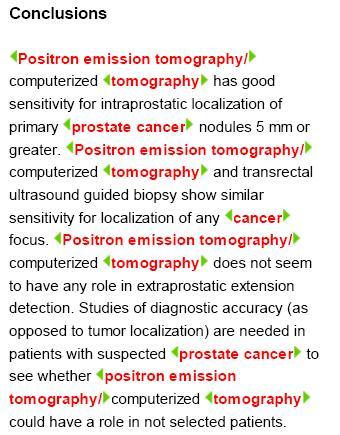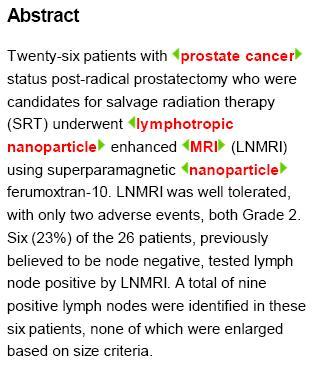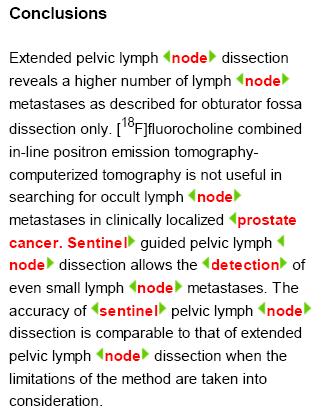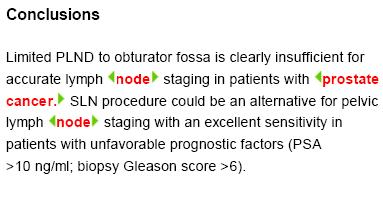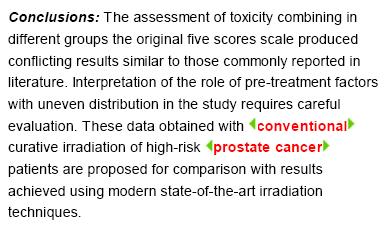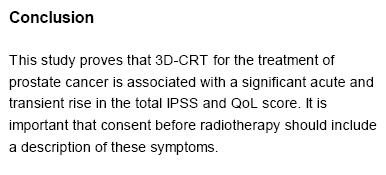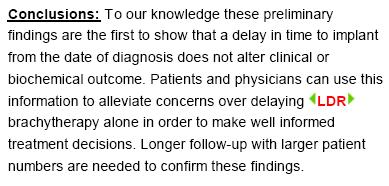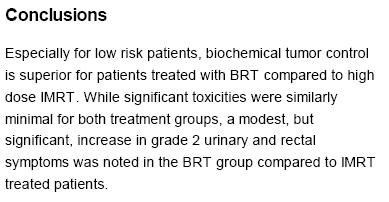The first reported used of x-ray therapy to treat prostate cancer, which claimed to have an excellent result is done by Imbert and Imbert in 1904. The investigation of x-ray radiation for patient therapy continued until it is adapted into clinical routine in the early 1920s (1). Progress in this area has been published by numerous scientists worldwide and served as the turning point for the development of new techniques and modalities.
Current Imaging Techniques
1. Ultrasonography
Contrast-enhanced Gray-scaleTransrectal Ultrasound-guided
Prostate Biopsy in Men with Elevated Serum Prostate-specific Antigen Levels by Yang et al, 2008
Transrectal Ultrasonography
of (TRUS) of the Prostate by Shetty et al, 2008
2. Computed Tomography
Adaptive radiotherapy for prostate cancer using kilovoltagecone-beam computed tomography
: First clinical results by Nijkamp et al, 2008
Examining Margin Reduction and Its Impact on Dose Distribution for Prostate Cancer Patients UndergoingDaily Cone-Beam Computed Tomography
by Hammoud et al, 2008
3. Magnetic resonance imaging
How Good isMRI
at Detecting and Characterising Cancer within the Prostate? by Kirkham et al, 2006
Dynamic Contrast-Enhanced MRI
for Preoperative Identification of Localised Prostate Cancer by Villers et al, 2007
Emerging Imaging Techniques
4. Magnetic resonance spectroscopy
Magnetic Resonance Imaging and Spectroscopy
in Prostate Cancer by Dayan Loria, 2009
Combined
Magnetic Resonane Imaging and Magnetic Resonance Spectroscopy Imaging
in the Diagnosis of Prostate Cancer: A Systematic Review and Meta-analysis by Umbehr et al, 2008
5. Hypoxia imaging
Hypoxia
in prostate cancer: A powerful shield against tumour destruction? by Marignol et al, 2008
An immunohistochemical assessment ofhypoxia
in prostate carcinoma using pimonidazole: Implications for radioresistance by Carnell et al, 2006
6. Positron emission tomography
Positron emission tomography
with c11-acetate for tumor detection and localization in patients with prostate-specific antigen relapse after radical prostatectomy by Sandbloom et al, 2006
7. Positron emission tomography/Compuerized Tomography
11C-Choline Positron Emission Tomography/Computerized Tomography
for Tumor Localization of Primary Prostate Cancer in Comparison With 12-Core Biopsy by Schiavina et al, 2006
[11C]Choline positron emission tomography/computed tomography
for staging and restaging of patients with advanced prostate cancer by Tunce et al, 2008
8. Lymphtropic nanoparticle MRI
Regional Lymph Node Staging usingLymphotropic Nanoparticle Enhanced Magnetic Resonance Imaging
with Ferumoxtran-10 in Patients with Penile Cancer by Tabatabaei et al, 2005
Lymphotropic nanoparticle-enhanced magnetic resonance imaging (LNMRI)
identifies occult lymph node metastases in prostate cancer patients prior to salvage radiation therapy by Ross et al, 2009
9. Sentinel node detection
Detection of Pelvic Lymph Node Metastases in Patients With Clinically Localized Prostate Cancer: Comparison of [18F]Fluorocholine Positron Emission Tomography-Computerized Tomography andLaparoscopic Radioisotope Guided Sentinel Lymph Node
Dissection by Hacke 2006
10. Real-Time elastography
Evaluation of Prostate Cancer Detection withUltrasound Real-Time Elastography
: A Comparison with Step Section Pathological Analysis after Radical Prostatectomy by Salamon et al, 2008
Real-time elastography
in the diagnosis of prostate tumor by Ferrari et al, 2009
External Beam Radiation Therapy
1. Conventional radiotherapy
Acute Toxicity ofConventional Radiation Therapy
for High-Risk Prostate Cancer in EORTC Trial 22863 by Zurlo et al, 2002
A Comparison of Treatment Planning Techniques Used in Two Randomised UK External Beam Radiotherapy Trials for Localised Prostate Cancer by South et al, 2007
2. Three-dimensional conformal radiotherapy
Acute urinary morbidity during3D conformal radiotherapy
for localised prostate cancer by Burden et al, 2009
3-D conformal radiotherapy
of localized prostate cancer: A subgroup analysis of rectoscopic findings prior to radiotherapy and acute/late rectal side effects by Goldner et al, 2005
3. Intensity modulated radiotherapy
IsIMRT
needed to spare the rectum when pelvic lymph nodes are part of the initial treatment volume for prostate cancer? by Sanguineti et al, 2006
4. Brachytherapy
• High-Dose rate brachytherapy
Genitourinary Toxicity AfterHigh-Dose-Rate (HDR) Brachytherapy
Combined With Hypofractionated External Beam Radiotherapy for Localized Prostate Cancer: An Analysis to Determine the Correlation Between Dose–Volume Histogram Parameters in HDR Brachytherapy and Severity of Toxicity by Ishiyama et al, 2009
An Eight-Year Experience of
HDR Brachytherapy Boost
for Localized Prostate Cancer: Biopsy and PSA Outcome by Bachand et al, 2009
• Low-dose rate brachytherapy
Does a Delay in
Low Dose Rate (LDR) Brachytherapy
After Tissue Diagnosis Affect Outcome for Men with Low Risk Prostate Cancer? by Andrews et al, 2005
Comparison of 7-Year Outcomes Between
LDR Brachytherapy
and High Dose IMRT for Patients With Clinically Localized Prostate Cancer by Zelefsky et al, 2007
5. Proton therapy
Radionuclide Treatment in Metastasized Prostate Cancer
Strontium-89
Rhenium-186
Rhenium-188
Samarium-153
References:
1. Sriprasad S, Fenely M, Thompson P. History of prostate cancer treatment. Surgical
Oncology (2009), doi:10.1016/j.suronc.2009.07.001
2. Moyers M, Pouliot J. POINT/COUNTERPOINT:Proton therapy is the best radiation
treatment modality for prostate cancer. Med. Phys. 34(2), February 2007,
doi:10.1118/1.2405703
3. John S, Zietman A, Shipley W, et al. Newer imaging modalities to assist with target
localization in the radiation treatment of prostate cancer and possible lymph node
metastases. Int. J. Radiation Oncology Biol. Phys., Vol. 71, No. 1, Supplement, pp. S43-47,
2008.
4. Mangar S, Huddart R, Parker C, et al. Technological advances in radiotherapy for treatment
of localized prostate cancer. European Journal of Cancer 41 (2005) 908-921.
5. Van der Poel H. Radionuclide treatment in metastasized prostate cancer. European
Association of Urology – European Board of Urology update series 5 (2007) 113-125.
*****************************************************************************
Updated August 27, 2009





